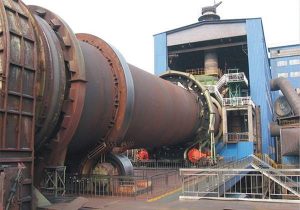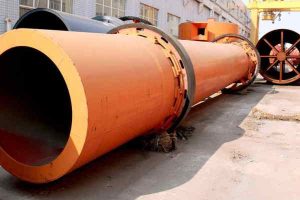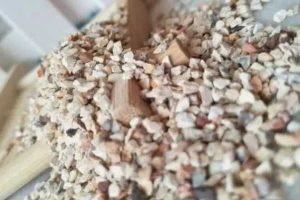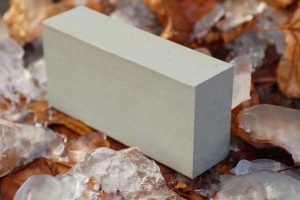The application of refractory bricks in the kiln immediately endangers the operation rate of the cement kiln and the production of cement clinker. The application cycle time of the new dry cement kiln refractory brick should not be less than 10 months, and the brick consumption of one ton of cement clinker should be less than 500 grams, otherwise, the application heart will analyze the cause of endangering the service life of the refractory brick, which is easy to improve and enhance.
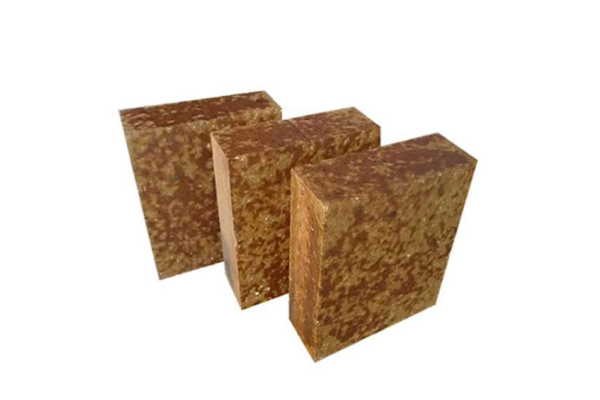
Application Of Refractory Silica Red Brick In Cement Kiln
The small heat transfer coefficient of the salmon-red brick enables the outer wall temperature of the kiln body to be maintained at about 320 degrees Celsius, and the small heat loss reduces the product cost of cement clinker manufacturing. By comparing the salmon red brick and spinel in the 5000t/d kiln, 2077.2kg of standard coal can be saved per day, according to the calculation, each kiln can save at least 600 tons of standard coal per year, and the light weight of salmon red and the kiln skin characteristics that are not easy to appear can further reduce the net weight of the kiln body about 200 tons.
Facilitate the preparation of storage and reduce period costs. Magnesium chrome brick, spinel brick, and other alkali refractory materials are not easy to store for a long time, especially in the rainy season, alkali refractory materials are very easy to absorb moisture resulting in internal crystal phase conversion, resulting in brick delamination solidification, light harm the application, serious loss of commodity value. In contrast, silicon Mo red brick has stable characteristics, simple storage equipotential, and does not have moisture absorption and solidification problems. In addition, because of the reduction of the type of refractory bricks equipped with the whole kiln, it is beneficial to reduce the cost of management methods. The short manufacturing cycle time and immediate delivery are also beneficial to the company’s effective brick preparation, reducing the amount of spare supplies and saving capital turnover.
Three key factors harm the life of refractory brick in the kiln: first, the quality and equipment of refractory brick. 2. Processing technology and manufacturing situation. Third, the storage and construction of refractory bricks.
The level is a prerequisite, the selection of high-quality goods and effective model selection is to ensure all the normal application of the preparation conditions, proper storage, and high-quality wall building to increase the use of refractory brick reliable guarantee! The lining brick in the kiln will be destroyed by mechanical equipment and organic chemical ground stress during manufacturing. The damage condition and root cause are described as follows:
Cement Rotary Kiln
1. Mechanical Equipment Ground Stress Damage
1. Hot Deformation And Extrusion Of Refractory Brick
When the furnace temperature reaches a certain level, the thermal deformation of the kiln radial will cause the working pressure, resulting in the extrusion molding of adjacent refractory bricks in the middle. When the working pressure is too high as the compressive strength of refractory bricks, it will cause the surface of the refractory brick to fall off. The following countermeasures should be taken for such problems :1. Dry masonry firebrick, set effective side cardboard,2mm coal brick firebrick,2. Leave a suitable brick ring.
2. Stainless Steel Plate Ground Stress Damage
At the hot end of the refractory brick, the surface stainless steel plate and magnesium oxide produce chemical changes in the magnesium brick, which is converted into a magnesia chemical material at high temperature, and the chemical material expands in volume, extrudes the refractory brick, and breaks horizontally. For such things, the practice of ceramic veneer iron for refractory bricks should be corrected or replaced with fire clay.
3. The Fire Brick Large-Scale Torsion Displacement
Because the wall is too loose, the kiln is often opened and shut down, and the shape of the kiln cylinder changes, so that the relative speed of the kiln cylinder body and the cool surface of the lining brick causes the lining brick to twist and shift and the tile surface to burst and drop the Angle. The following countermeasures should be adopted for such things:
(1) When building a wall, a large number of refractory bricks should be hammered with a wooden mallet, the lock brick should be stuck tightly, and the wedge iron should be added twice with the heart.
(2) Long-maintained thermal insulation regulations.
(3) Part of the shape of the kiln barrel is leveled with high-temperature balance cement.
⑷ Oval-shaped stress extrusion
The gap expansion of the kiln wheel belt pad causes a large ellipticity, resulting in the extrusion of the refractory brick. For such things, the oval of the head should be checked on time, such as the oval value of 1/10 of the kiln diameter (such as 4.7 meters of kiln diameter, the larger oval value of 0.47%), the pad should be replaced or the pad should be raised to adjust the gap of the wheel belt.
4. lock iron ground stress extrusion molding
When locking the brick, the lock iron is too much and too tight, which will cause the brick groove at the lock gate. The following countermeasures should be adopted for such things:
(1) No 3 pieces of lock iron shall be produced at the same lock.
(2) The lock iron spacing should be dispersed as much as possible.
(3) When locking bricks, the inside and outside of the mouth are tight and consistent.
(4) Lock iron as far as possible to eliminate thin lock bricks.
5. Block Ring Extrusion Refractory Brick
The bricks of the brick circle break due to extrusion and cracks. For this purpose, one brick circle should be changed to two brick circles.
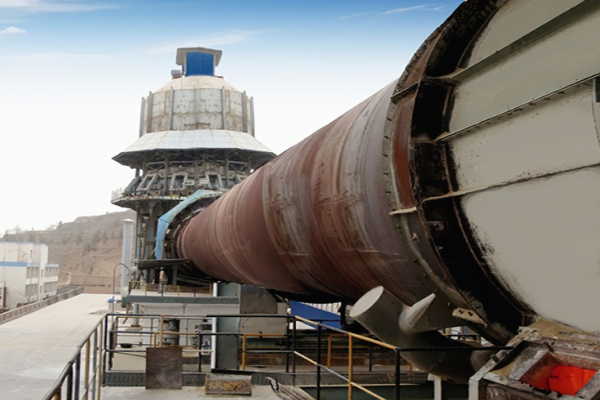
2. Thermal destruction
1. Temperature condition
The partial temperature in the kiln causes the indentation of refractory brick to melt. To prevent such things, the burner should be properly adjusted and effective refractory insulation materials should be selected in different locations.
2. Thermal shock condition
Because of the sudden temperature change caused by welding stress resulting in falling off the tile surface, the key is often caused by cold and hot shutdown. The actual operation of manufacturing should be smooth, and effective rules and regulations for cooling kilns should be formulated.
3. Organic Chemical Corrosion Damage
⑴ Alkali corrosion
The chemicals of liquid alkali salts penetrate the gap in the brick, which is cold and dry.
⑵ chromium corrosion
Under the corrosion of too much alkali salt, the (K, Na)2O of chromite ore and mineral acid is converted into K2(Na2Cr6), and the hexavalent alkali chromate caused by chemical changes not only causes damage to the brick body, but also causes environmental pollution and serious harm to physical and mental health, so magnesium chrome brick should be reduced and stopped, and replaced by magnesia aluminum spinel, magnesia iron spinel, limestone brick.
(3) Solidification condition
MgO and water are converted into Mg(OH)2, which increases the volume and destroys the overall structure of the firebrick. Because refractory bricks containing mgo and cao produce solidification reactions, moisture, moisture, and rain protection are guaranteed in the storage, transportation, and masonry walls of refractory bricks. From the destruction principle of the left and right firebricks, it can be concluded that the construction standard of refractory insulation materials can reasonably increase the use period of refractory insulation materials, and the construction of furnace construction with professional technology, dedication, and rich work experience is a key step in the application of refractory insulation materials.
All in all, each cement kiln has a different system software, to find the cause of its problems and deal with it, sometimes needs to cooperate in many ways, which can have the actual effect of less effort.
Quality Standard For Refractory Brick Masonry In Furnaces
Quality Regulation Of Furnace Body
(1) The thermal insulation bricks required by the furnace body and the thermal insulation materials should meet the relevant standards and specifications, such as when the raw materials are changed, the technical unit is willing to be obtained.
(2) The bricks used in the furnace body should be adopted according to the two-level insulation bricks and the first level 75 or 100 system specification red brickhead. Bricks should be vertical, with no cracks, missing corners, and detailed edges. Should conform to GB4415-84 and GB3994-83.
(3) When thermal insulation bricks need to be produced and processed, tools and mechanical equipment should be used to carry out production and processing, and the surface of production and processing should be leveled, and the wound surface of thermal insulation bricks, the missing diamond surface and the tile surface processed by production should not be built towards the fire surface.
Product quality standard for refractory insulation materials for walls in industrial kilns
(4) Can not be used 1/3 and less than 1/3 brick length broken insulation brick, in each side of the length of all the layers over 1/3 brick length broken brick number can not be more than 3 pieces.
(5) Wall mortar should be used with the same raw material as the filling wall, and should meet the requirements of the relevant specifications.
(6) The insulation brick wall of the gas steam boiler is generally a class I to II filled wall, and the ash joint of the insulation bricklayer is 1.5 to 3mm. The red brick head layer ash seam is 5 ~ 7mm. The thickness of the filling wall brick seam at each position of the heating furnace shall not be specified in the table. The allowable deviation of the gap between the surface of the furnace body and the water pipe shall not be out of the indicated value.
(7) In the middle of the inner layer insulation brick and the surface red brick head, every 5 or 7 layers of bricks must be insulated brick or special insulation brick as the drag brick in the surface layer, or each layer is divided into several pieces of drag brick, and the parts of each layer drag brick are separated on the bisect line.
(8) According to the provisions of the sample drawing, the swelling joint should be left open. The total width of the expansion joint left at the corner of the inner layer of the furnace is generally 25mm according to the calculation formula of the expansion joint. There is no need to have slag, sand, or other dirt in the expansion joint, the expansion joint is filled with asbestos rope, and its diameter is generally more than the width of the expansion joint 2mm, and the asbestos rope near the furnace body is smeared with refractory cement to avoid smoke infiltration inside.
(9) The steel frame structure, column, and bearing beam of the heating furnace are not left with swelling joints around, and asbestos rope (plate) or other insulation materials are strictly separated from the furnace body.
(10) The main supporting point of the furnace body machinery and equipment and the header of the water cooling wall can not be placed on the furnace wall, and the gap should be left according to the sample drawing specifications.
(11) According to the furnace body or the water pipes and header in the furnace wall, it is forbidden to be jammed too tightly by the wall. It is necessary to empty the gap according to the sample drawing. The water pipes through the wall should be tightened with φ15 ~ φ20mm asbestos rope, and then the gap should be filled with refractory mud, and smoke should not leak.
(12) The old furnace wall is not allowed to have gaps, or incomplete fall down. The skew of the old furnace wall is too large to exceed 4mm per meter. Surface cavitation can not be more than 12mm deep, and some areas of cavitation can be smoothed with architectural paint.
(13) The surface of the furnace body is red brickhead, and the clay mortar is generally used, and the concrete mortar is used less. Brick seams are generally 5mm, and some allow 8mm, but not more than 10 per square meter. If mixed mortar is used, the brick seam is 7mm, and some allow 10mm, but not more than 8 pieces per square meter.
(14) The surface of the red brick head of the furnace body should be leveled, there should be no gaps off the brick, there should be no concave and convex bending, and the gap should not exceed 10mm with a 2m tablet computer ruler.
(15) The exhaust pipe (generally 4/8in pipe) is less than 1 pipe per 2m ‘to ensure that the oven is properly supplied. After roasting the furnace, the exhaust pipe should be blocked.
The Quality Of The Front And Back Arch Is Specified
(1) Selection of bricks, commonly used special-shaped bricks conform to the requirements of the sample drawing. It should be intact, and it is strictly forbidden to use bricks with missing corners and bricks with damaged or cracked suspension parts.
(2) The crane and iron beam are detailed, and can not burn or fall, the crane or wooden frame beam can not be too thin and thick 1/2.
(3) Arch iron beam deformation per meter can not be more than 2mm, and the total length can not be more than 12mm.
(4) When renovating special-shaped bricks, the firmness of the bricks should not be weakened too much.
(5) The part of the arch and the furnace body touching should be emptied according to the specifications of the sample drawing. Fill seams with asbestos rope and smooth with refractory clay.
(6) The arch surface should be detailed, not crack damage, fall, or uneven, with a 2m tablet computer ruler close inspection, its gap can not exceed 10rnm. The total width of the brick seam can not be 2mm, and some are allowed to reach 3mm, but the total area of each square meter can not be 3. The total area of ablation should not exceed 0.5m2, its deep depth should not be 30mm, and it should be smoothed with architectural paint.
(7) For the front and back arches made of refractory concrete, the raw materials and construction techniques should meet the relevant technical standards.
Quality Regulations For Manhole Doors And Lit Four-Round Holes
(1) The allowable deviation of the nominal diameter of the round hole and the design elevation of the arch door is 5mm.
(2) The extension line of the circular hole brick seam and the arch door brick seam should be based on the center point. The number of bricks commonly used in round holes is even, and the number of bricks commonly used in arch doors is odd.
(3) When building the arch door, it is necessary to build the central government from both sides and when building the lower semicircle of the round hole of the wall, the bricks adjacent to the round hole will eventually build another wall.
(4) After the brick arch is built, the arch door with a span of about 600mm should be removed after less than 2 to 3 hours.
(5) The brick seam of the round hole and arch door is not 2mm, and some reach 3mm. Arch door and round hole surface without uneven, cracked, and incomplete condition.
(6) Old arch doors and round holes can be repaired after etching, but can not be ventilated and smoke leakage.
Quality Regulation Of Furnace Top Wall
(1) The brick is laid on the top of the furnace, and the top brick is used according to the sample drawing, and its quality and size deviation should meet the relevant requirements.
(2) The bricklayer to the bottom surface, there can not be some bricks or a row of bricks highlighted, with a tablet computer ruler close inspection, its gap can not exceed 16mm. The old bricklayer should not have gaps and should not fall down. The cavitation depth is larger than 20mm, and some areas can be smoothed with architectural paint.
(3) According to the superheater tube part of the bricklayer of the furnace top, it is necessary to tie the asbestos rope of φ10 ~ φ12mm, the length of the water pipe should be 40~50mm larger than the thickness of the furnace top, and it is strictly coated with refractory concrete.
(4) The total width of the special-shaped brick seam can not be 3mm, and some can be 4mm, but it can not be 8 pieces per square meter.
(5) The place where the bricklayer on the top of the furnace and the connecting part of the furnace body are placed is empty and filled with asbestos rope, and the top is covered with attapulgite soil.
(6) The top bricklayer of the furnace should be coated with a layer of architectural paint, with a thickness of 20 ~ 30mm to prevent smoke leakage.
Quality regulation of cold ash bucket wall
(1) The upper and lower walls of the cold ash bucket should be leveled, and it is prohibited to highlight or skew inward. The skew height of the old cold ash bucket can not exceed 5mm per meter, and the cavitation depth can not exceed 12mrn. No cracks or falls.
(2) It is forbidden to have some bricks convex, do not allow stairs, and use a 2m tablet computer ruler to check that the gap is not large
At 10mm.
(3) The diagonal wall on the supporting Angle should be leveled, there should be no bricks falling and gaps, and there is no need to have some prominent bricks and bricklayers. Cavitation depth can not be 10mm. Diagonal wall tile seams can not exceed 3mm, some allow 4mm, less than 10 per square meter. A part of the water pipe over the wall is covered with fire-resistant concrete or a special type of brick waterproof sleeve.
(4) The bottom of the furnace must not be ventilated to the furnace.
Quality requirements for exhaust wall under air preheater
The wall should be neat, with no cracks or falls, no smoke leakage, and ventilation. The depth of cavitation erosion on the surface of the old wall is larger than 25mm. Some areas can be covered with refractory paint.
As a professional refractory material manufacturer, we have rich experience in the construction and renovation of kiln linings. If you have relevant questions and needs can call for consultation, we will provide you with professional solutions with a sincere service attitude.

